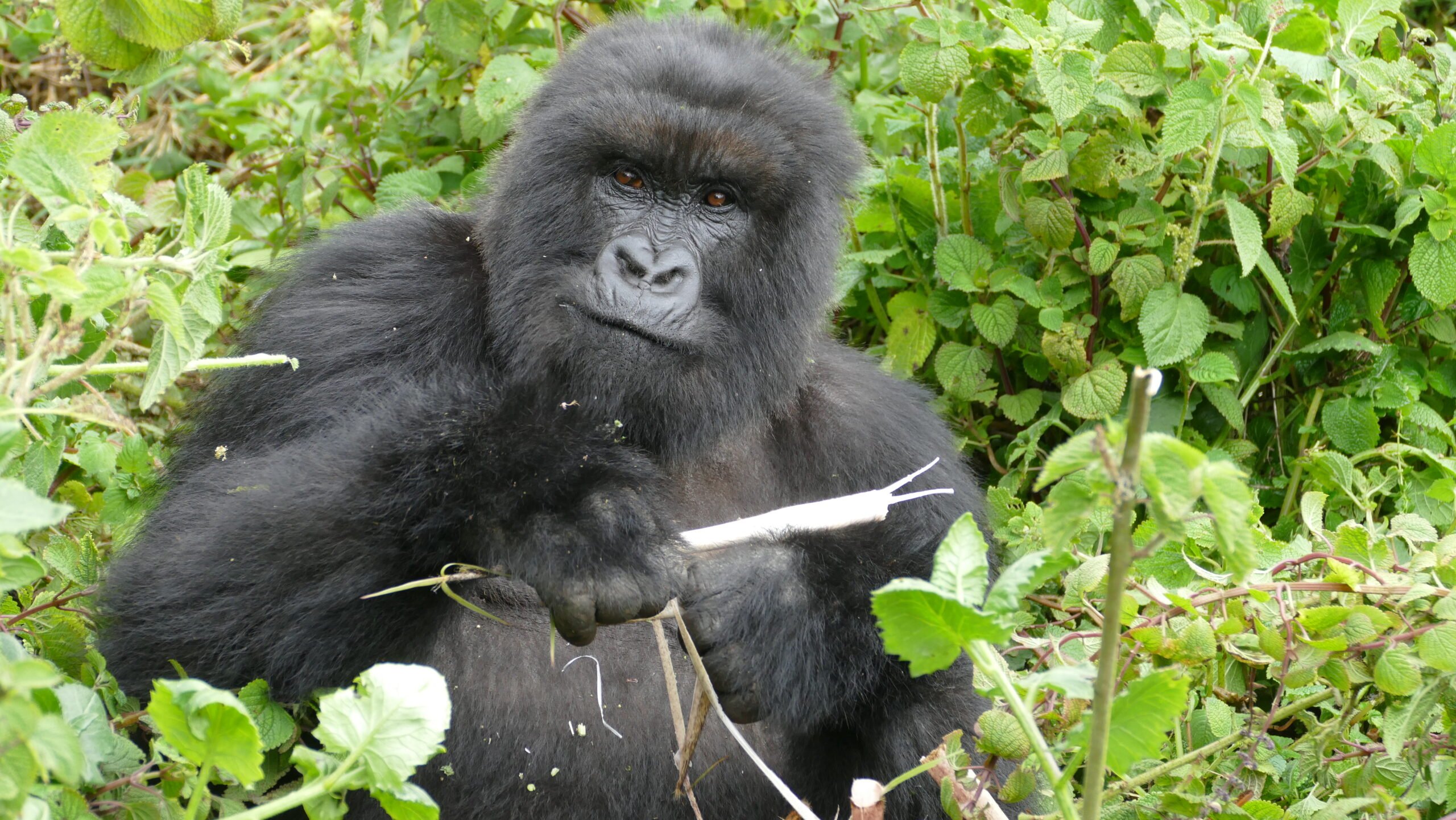As the mountain gorilla twins born in January approach their sixth month of life, their increasing size means that mother Isaro now has additional challenges to face: how to handle and carry these growing infants, who are also increasingly agile and curious.
In the early months, Isaro was able to carry both of the twins against her chest with one arm, while using the other arm to walk (gorillas normally walk on all fours). But the increased weight of the growing twins is now forcing Isaro to shift their position more often while she is walking, or to provide arm support to only one of them.
B ![]() ut now even this is getting more difficult and so Isaro has to redistribute them frequently. She has also been seen carrying one infant in each arm and walking bipedally (on only two limbs) for a few meters, or using vegetation to help her maintain balance! At other times, our staff has observed her encouraging one of the infants to ride on her back, which leaves the other one with more space to cling to Isaro’s chest, with occasional additional support from the mother’s arm.
ut now even this is getting more difficult and so Isaro has to redistribute them frequently. She has also been seen carrying one infant in each arm and walking bipedally (on only two limbs) for a few meters, or using vegetation to help her maintain balance! At other times, our staff has observed her encouraging one of the infants to ride on her back, which leaves the other one with more space to cling to Isaro’s chest, with occasional additional support from the mother’s arm.
“This is a very important phase in their lives, to see whether Isaro will be able to invest equally in both infants,” says Veronica Vecellio, gorilla program manager at the Karisoke Research Center. “We are now collecting behavioral data on each twin separately, allowing us to compare their activity types and levels. Observations show one twin is more active than the other, and we hope this is due to normal variability and not to uneven feeding.”
Lead tracker Eric Kabeja has observed on several occasions that one twin has pushed away the other when feeding, although the “losing” twin then just resumes feeding on the other side. This may just be normal infant “greediness” and is the only evidence of sibling conflict that we have observed.
Father may get involved soon!
We are also eagerly awaiting the time when the father and group leader – dominant silverback Isabukuru – will start interacting with the infants. At the moment they are still too young for this, but Isabukuru is known for being very actively involved with youngsters in his group. He has been observed carrying infants carefully and engaging patiently in play behaviors, including having youngsters climb onto his broad chest during resting periods, where they then attempt to push each other off in a game of “king of the hill.”
This behavior by Isabukuru seems to provide good stimulation for youngsters and perhaps even helps them develop their independence. He’s also known for his relaxed leadership style and popularity with females, though he has not always been very tolerant of human observers.






